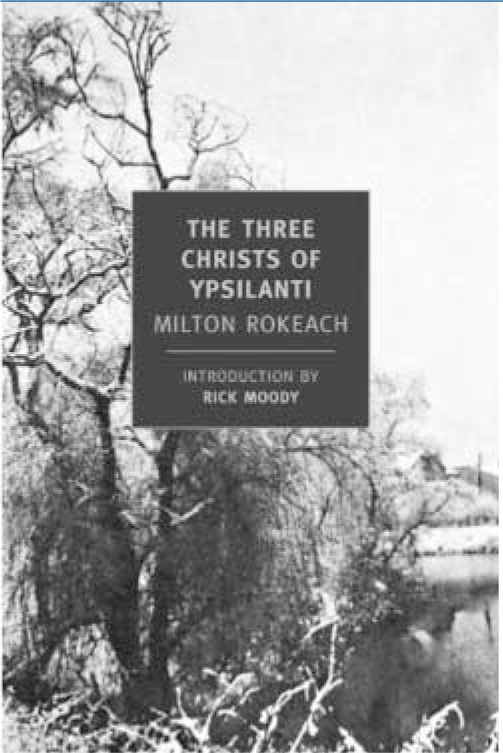
This book, originally published in 1964, has recently been re-released. The author, Milton Rokeach, a social psychologist, describes his work investigating the nature of belief and personality, in this case through the observation of three men with a diagnosis of paranoid schizophrenia.
The work draws its inspiration from a text by Voltaire in which an individual holding the belief that he was Jesus Christ is confronted by another with the same belief and ‘was so struck with the folly of his companion, that his eyes were opened to the truth of his own condition’. Through bringing together individuals with the same delusional belief Rokeach hopes to gain understanding of an individual's belief and to perhaps affect a degree of recovery in his participants.
In July 1959, three men are selected for a form of controlled trial: Joseph Cassel, 58 years old and a resident hospital in-patient for almost 20 years; Clyde Benson, 70 years old, an in-patient of 17 years; and Leon Gabbore, 38 years old, resident at the hospital for the past 5 years. The men all shared the belief that they were God and arrangements were made to ensure that they would all be housed on the same ward. A control group of such is provided in the form of three women, each holding different beliefs; however, Rokeach quickly loses interest in this group and ceases meeting with them.
Through a series of daily meetings over a period of 2 years Rokeach seeks to confront the men with the impossibility of their shared belief, in his terms an ‘identity confrontation’. Projects are devised to compel the men to work together and also through the use of fictitious letters from ‘positive authorities’, for example from Leon's ‘wife’. In reality Rokeach aimed to produce positive behavioural changes in the men. He hoped that when confronted with evidence relating to the impossibility of their beliefs, the men would undergo a measure of recovery; when this is unsuccessful he takes it on himself to construct fictional letters from individuals within the men's delusional structures hoping to induce a behavioural change.
The book provides a fascinating insight into the passion with which Rokeach pursues his work. Indeed, in his closing commentary he comments that there may have been four, not the planned three, individuals with delusion involved in the project – holding as he does the unshakeable belief in his ability to alter the beliefs and personalities of these individuals. As would be expected these efforts are ultimately doomed to failure, and while the methods used would sit uneasily with modern ethical principles, the book still conveys the high degree of warmth and respect felt by Rokeach towards his study participants, and also the focus and determination with which he explores the delusional structure of the three men. The book ultimately provides a reminder of the amazing range of interest and compassion to be found within our discipline.





eLetters
No eLetters have been published for this article.